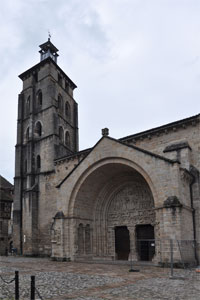
William of Aquitaine had no thought of monastic reform when he founded Cluny. But anything else? Well, I wasn’t quite sure at the time, and then the other day my reading put this before me: And it is quite a startling document as you can see there, albeit mainly for its grandeur and curses. 3 This one was significant enough to get in however. This kind of distinction is, I think, also implied by the way it’s in the Internet Medieval Sourcebook, where charters are a rarity. But when I first taught this, I was told to do so from Cluny’s foundation charter, as if it set out new principles, as if it might be read as a manifesto for the New Age. When Cluny starts, no-one knows this is going to happen. If they’re really interested, they can go on to look at one of the lesser houses that Cluny reformed, like for example St-Martin de Tulle, themselves. It also generates some truly spoony sources, either in quantity or in content, and so it is the obvious thing to try and cover all reform-period bases with. 1 And although it is a bit like teaching the geography of mountains with Everest, when something more average might be more representative, we all want the students to go away enthused, and so we pick on Cluny, with its 24-hour prayer cycle, unceasing commemoration, and Europe-wide donations, grants from the King of León man, places Cluny’s never heard of donate to Cluny because it’s so famous and it has strings of daughter houses, some of which acquire their own strings and so on. Similarly, if you’ve taught it, you surely mentioned Cluny, because except for Gregory VII and Henry IV’s poison-pen exchanges, Henry standing in the snow in sackcloth at Canossa while Gregory bit his fingernails, and the final denouement quote, “I have loved justice and hated iniquity, wherefore I die in exile”, which is all good stuff but late, the biggest thing in the topic is Cluny. If you’ve studied the reform movement you’ve been told about Cluny, I guess. Breathe a minute while I get my style under control.

If you’ve ever been taught about the Church reform movement of the tenth and eleventh centuries, which since it more or less led to the Investiture Crisis which brings up the sort of issues that even modern historians love about theories of sovereignty and so forth, you probably have-I’m just going to let that sentence drop, actually. I’m not thinking so much about the place, however, or even the historical entity, but about how we approach it as historians.

Some of my recent reading has led me back to thinking about Cluny. Exterior view of the transept of the abbey church of St-Pierre de Cluny, from Wikimedia Commons


 0 kommentar(er)
0 kommentar(er)
